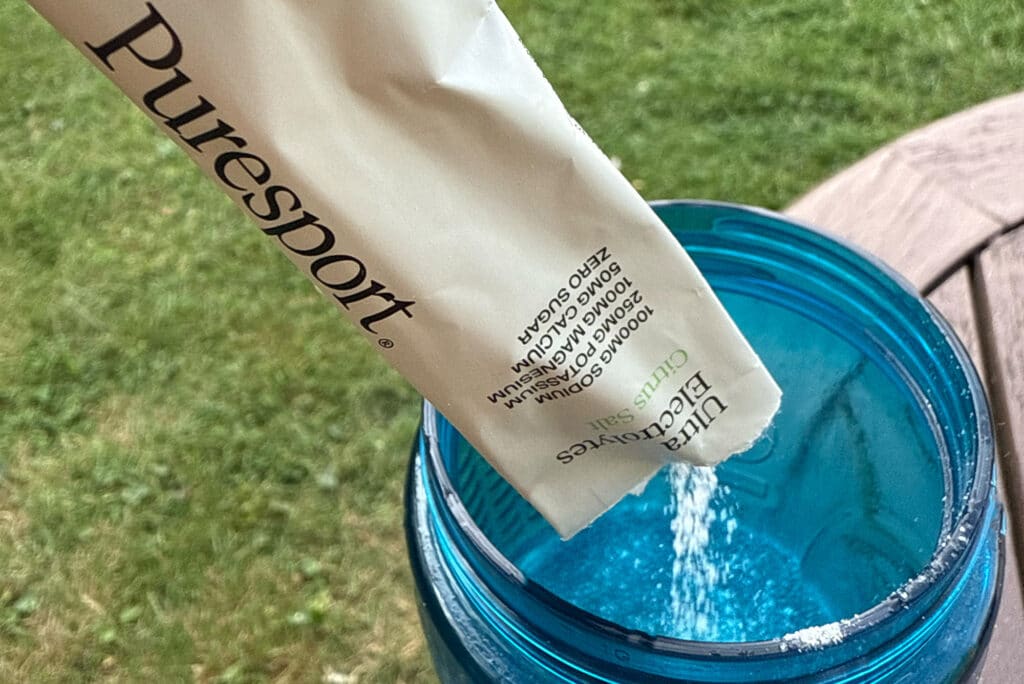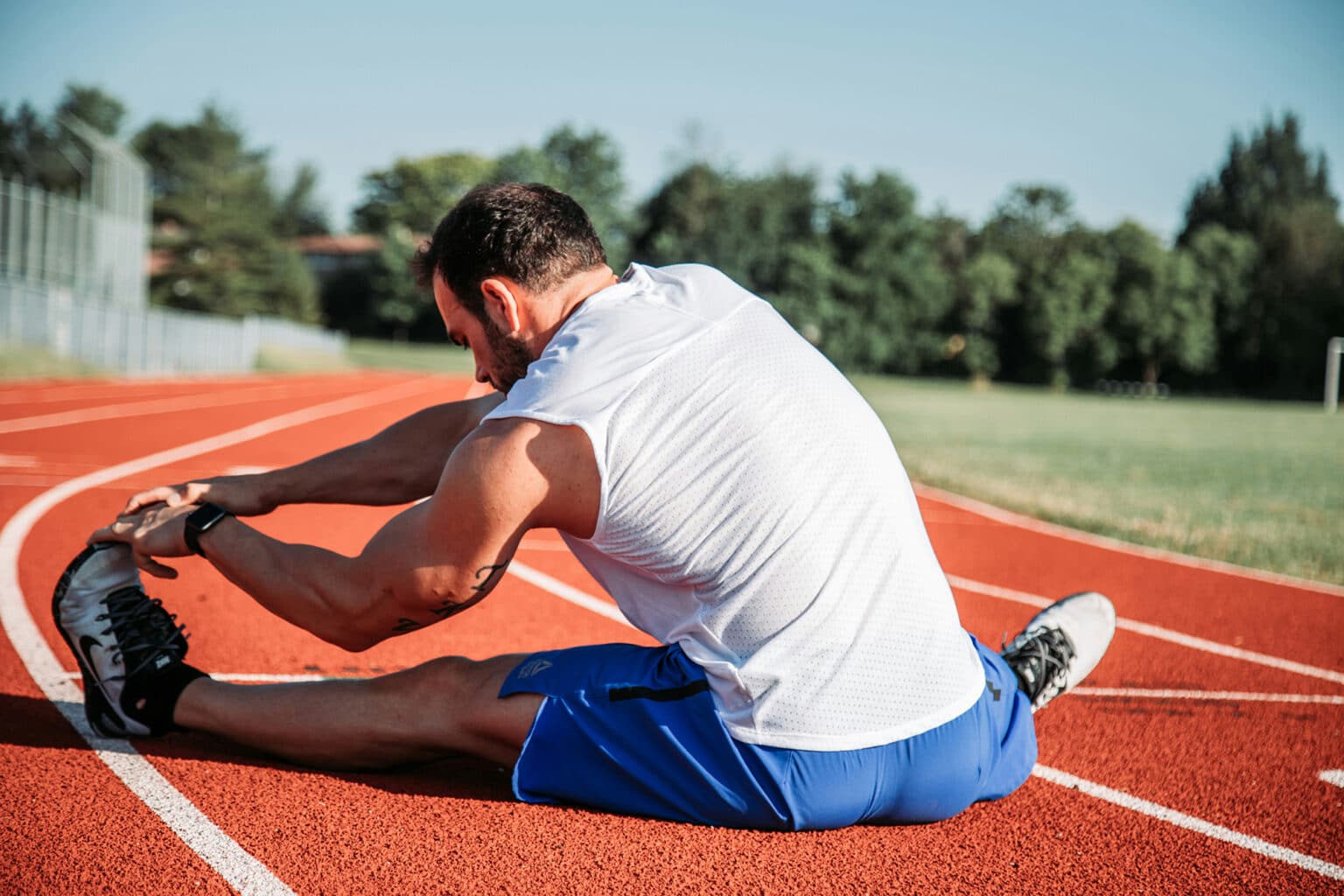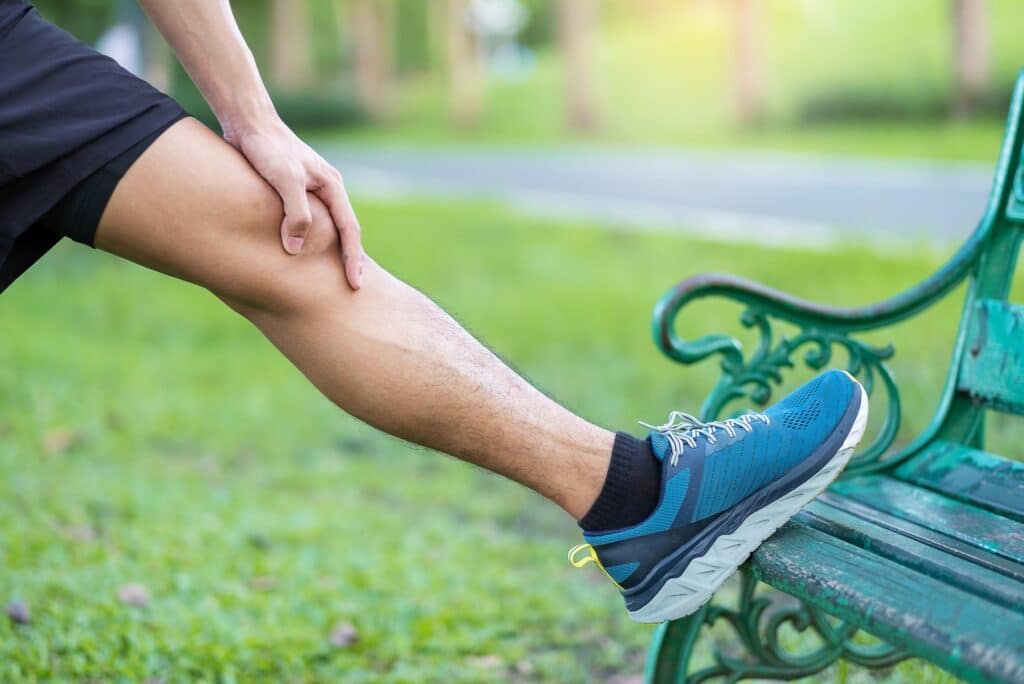


Running offers a remarkable opportunity to enhance cardiovascular fitness, boost stamina, and alleviate stress. However, it can also give rise to common discomforts that impede progress and enjoyment. In this blog post, we will delve into the various body parts that may experience pain while running, discuss how to differentiate between normal discomfort and potential injury, and offer valuable insights on minimising these issues.
Let’s look at what body parts hurt when running:
Running places a significant amount of stress on the body, causing strain and wear to muscles and connective tissues. Over time, imbalances in muscle strength, flexibility, and biomechanics can increase the risk of injuries, resulting in pain in various areas of the body. Additionally, running on hard surfaces, wearing inadequate footwear, or increasing mileage too rapidly can also lead to discomfort.

It is essential to listen to your body and differentiate between normal discomfort caused by exercise and potential injuries. It is normal for muscles to feel sore and stiff after a run, especially if you are new to running or have increased your mileage. However, if the pain persists or worsens with each run, it may indicate an underlying injury. If your pain worsens with activity, interrupts your sleep, or doesn’t improve within a few days, you should consult a healthcare professional.
While running, you may feel discomfort in different areas of your body, with the most commonly affected being:
Foot pain is a frequent complaint among runners and can stem from various causes, such as plantar fasciitis, Achilles tendonitis, or stress fractures. It can also be attributed to wearing improperly supportive or cushioned shoes. Plantar fasciitis, the most prevalent cause of heel pain, occurs when the tissues on the arch of the foot become irritated and inflamed due to damage or tearing. Achilles tendinitis, on the other hand, is an overuse injury affecting the Achilles tendon, the band of tissue that connects the calf muscles to the heel bone. This condition commonly affects runners who have suddenly increased the intensity or duration of their runs.
The repetitive impact of running can lead to knee pain in various forms, such as patellofemoral pain syndrome, IT band syndrome, or meniscus injuries. Muscle imbalances or poor running form can also contribute to this discomfort. Common types of knee pain include runner’s knee (pain beneath the kneecap) and Iliotibial band syndrome (known as IT band syndrome), which presents as lateral knee pain. Weakness in the hips and glutes is often a contributing factor to knee pain. For instance, IT band syndrome causes knee pain, but the underlying cause can be attributed to weak glute muscles. When these muscles do not engage sufficiently, other muscles, such as the tensor fasciae latae (which the IT band connects to), compensate and become tight, resulting in discomfort. The tight muscles then exert tension on the IT band, leading to pain.
Hip flexor strains and gluteal tendonitis are frequent hip injuries that can cause discomfort during running. These injuries often stem from tightness in the muscles surrounding the hip joint or weak gluteal muscles. Hip flexor strains arise when the muscles extending from the pelvis to the thigh bone become strained, resulting in pain in the front of the hip or groin. Gluteal tendonitis, on the other hand, is an overuse injury caused by tension and irritation in the tendons connecting the glutes to the hips and thighs. This condition is commonly observed in runners with weak core and hip muscles.
Running can exert strain on the lower back, causing pain and discomfort. This is often observed in runners with insufficient core muscles or those who maintain poor posture while running. It can also stem from underlying conditions like spinal stenosis or herniated discs. Weak glute muscles are another potential cause of lower back pain, as they play a vital role in stabilising the spine.
Shin splints, also known as pain in the lower leg, are a common affliction among runners. This condition often arises from overuse and can be triggered by rapidly increasing mileage or running on hard surfaces with improper footwear. Novice runners can develop shin splints by pushing themselves too far when starting out, while experienced runners may experience it when modifying the intensity or duration of their workouts.
When the muscles, tendons, and bone tissue surrounding the tibia become overwhelmed by excessive strain, they cause pain in the area where the muscles attach to the shin bone. Additionally, individuals with naturally flat feet or those wearing inadequate footwear may also encounter this discomfort. Symptoms include sharp or dull throbbing during or after exercise, as well as tenderness upon touching the affected area.
Shoulder pain can occur in long-distance runners who carry a backpack or run with their arms held too tightly. It may also be a result of poor posture or muscle imbalances in the upper body. The rotator cuff muscles, which are essential for maintaining shoulder stability and function during arm movements, can be strained from repetitive overhead motions while running. This can cause pain in the shoulders and upper back.
Hamstring strains frequently occur in runners who lack sufficient flexibility or strength in these muscles. This can result in discomfort during running and potentially more serious injuries, including tears. Hamstring strains are a common issue among runners and often stem from overstriding or pushing too hard without a proper warm-up. With time and patience, the hamstring strain should gradually heal. However, if pain persists or worsens, it is advisable to seek medical attention.
Quadriceps pain can occur due to muscle imbalances or overuse. It may also be a result of tightness in the muscles, leading to increased strain and discomfort while running. Quads are vital for maintaining proper form and absorbing shock during running. Therefore, any issue in these muscles can significantly impact a runner’s performance and cause discomfort.
The glutes play a crucial role in running, providing stability, power and reducing the risk of common running injuries. Weak or underdeveloped glute muscles can cause discomfort and potentially lead to more serious issues if not addressed. One such condition is Piriformis syndrome, which occurs when the piriformis muscle in the buttocks becomes overactive and compresses the sciatic nerve, resulting in pain in the buttock and leg.
Another potential issue is muscle strain; although less common than hamstring or calf strains, it can still affect the glute muscles. Additionally, SI joint pain may arise when the joint connecting the pelvis and spine becomes inflamed or dysfunctional, resulting in lower back and buttock pain. Therefore, prioritising glute strength and addressing any potential issues is vital for maintaining a healthy and pain-free running experience.

Aside from muscle imbalances and weak muscles, there are other common mistakes that can lead to discomfort while running. These include:
Running shoes that do not provide adequate support or are worn out can contribute to various aches, pains, and injuries. It is crucial to invest in a good pair of running shoes that provide proper cushioning and support based on your foot type and running style.
Check out SportsShoes.com for the latest running shoes, including brands such as Nike, On, Adidas, Asics, Mizuno and many more. If you sign up to our newsletter you will get a 15% off code for SportsShoes.com
Excessive training or inadequate rest can lead to overuse injuries, such as shin splints and stress fractures. Rapidly increasing mileage or neglecting recovery periods can also contribute to these injuries. To prevent such issues, it is crucial to incorporate rest days and gradually increase mileage, allowing the body to adapt and recover effectively.
A dynamic warm-up prepares your muscles and joints, reducing the risk of strains and sprains. Skipping a warm-up can lead to discomfort and potential injuries during a run.
Running with incorrect form, such as overstriding or slouching, can put added strain on muscles and joints, leading to pain and discomfort. It is essential to focus on maintaining proper posture and form while running. Additionally, incorporating strength and flexibility training can help improve form and prevent issues caused by muscle imbalances.
One of the most common mistakes runners make is ignoring pain and pushing themselves too hard. If you experience discomfort while running, it is essential to listen to your body and take appropriate measures, such as resting or seeking medical attention if necessary. Ignoring pain can lead to more severe injuries that may require extended periods of recovery and even prevent you from running altogether. Listening to your body and addressing pain early on can prevent minor aches from turning into debilitating injuries.
While it’s impossible to eliminate the risk of injuries while running completely, there are steps you can take to reduce your chances of getting hurt. Depending on the cause of your pain, possible treatments could include rest, ice, over-the-counter pain relievers, physical therapy, and strengthening exercises. Always listen to the advice of your healthcare professional when addressing a running injury. Taking steps to prevent discomfort while running can help ensure a safe and enjoyable experience. Here are some strategies that may help:
To enhance your workout routine and minimise the risk of injury, it is crucial to incorporate running-specific strength training exercises. Focusing on core, hip, and glute strengthening exercises can greatly improve muscle imbalances and maintain proper form, reducing any potential discomfort. Consider exploring the benefits of Pilates, as it offers techniques for strengthening muscles specifically for running. Visit https://pilatesforrunners.co.uk/ to discover a variety of exercises that can boost your running performance and help prevent any discomfort along the way.
Pay attention to any discomfort or pain while running and address it immediately. Taking appropriate measures early on can prevent injuries from worsening. Also, be mindful of your body’s signals and adjust your running routine accordingly. If you feel extreme fatigue, consider taking a rest day or decreasing mileage to allow for proper recovery.
Incorporate a dynamic warm-up routine before running to prepare your muscles and joints for the activity, and a cool-down routine to help your body recover post-run. These routines can help maintain flexibility and reduce muscle tightness, preventing discomfort while running.
Incorporating activities such as pilates, cycling or swimming into your workout routine can reduce the risk of overuse injuries by giving your body a break from repetitive stress on certain muscles and joints. It also helps strengthen different muscle groups that may not be utilised as much during running.
Getting a sports massage can help to alleviate any tension and soreness in your muscles, allowing you to perform at your best. Seeing a physiotherapist for a sports massage can offer even greater benefits. They are knowledgeable about anatomy and can tailor the massage to target any specific areas that need attention. This can be especially helpful during a training block when your body is experiencing increased stress and strain. They can provide customised exercise suggestions for specific areas of concern, supporting recovery and reducing the risk of future injuries.
Rest is essential for your body to recover and adapt to the stress of running. Adequate sleep, nutrition, and hydration are crucial in preventing discomfort while running. Make sure you incorporate rest days into your routine and listen to your body’s signals for proper recovery. Following a training plan tailored to your level and distance will help you schedule rest and recovery days, reducing the risk of injury.
Running can be a highly rewarding and enjoyable activity, but it also requires proper attention to avoid discomfort and injuries. By addressing muscle imbalances, incorporating strength training, and listening to your body, you can prevent running-related pain and maintain a healthy running routine.
Pilates is an excellent way to improve your overall strength, flexibility, and body awareness, which can help minimise pain and keep you running injury-free. By incorporating Pilates into your training regimen, you’ll address muscular imbalances, improve your running mechanics, and ultimately enhance your performance on the road or trail.
Ready to give Pilates a try? Check out these Pilates for runners exercises that specifically target key areas of the body affected by running. With consistent practice, you’ll build a strong and resilient body that can handle all your running goals without experiencing pain or setbacks. So lace up those shoes, hit the pavement, and enjoy your pain-free runs!
Stay safe, stay strong, and enjoy your runs! Happy Running.
Join our mailing list to stay up to date with the latest UK running events, training tips, and exclusive offers on running products. Rest assured, we value your privacy and would never dream of selling your address. Sign up now…
Share this article
Are you a runner looking for a way to improve your performance, reduce the risk...
Patellar Tendinopathy Syndrome, also known as runner’s knee Patellar tendinopathy, or runner’s knee, is a...
Hip injuries in runners are often a result of intrinsic and extrinsic factors that challenge...
What is Pilates? While there are many different styles of Pilates, fundamentally, it is all...
Running undoubtedly stands as a fantastic approach to achieving your fitness goals. It draws millions...
Rest days are an essential part of any workout routine. They provide the body with...
We’re here to make sure you’re up-to-date with the latest running tips, events and product discounts – we’ve always got your back! Rest assured, we value your privacy and would never dream of selling your address.
BONUS: Sign up today and receive a FREE code for our Sub-4-Hour Marathon Plan